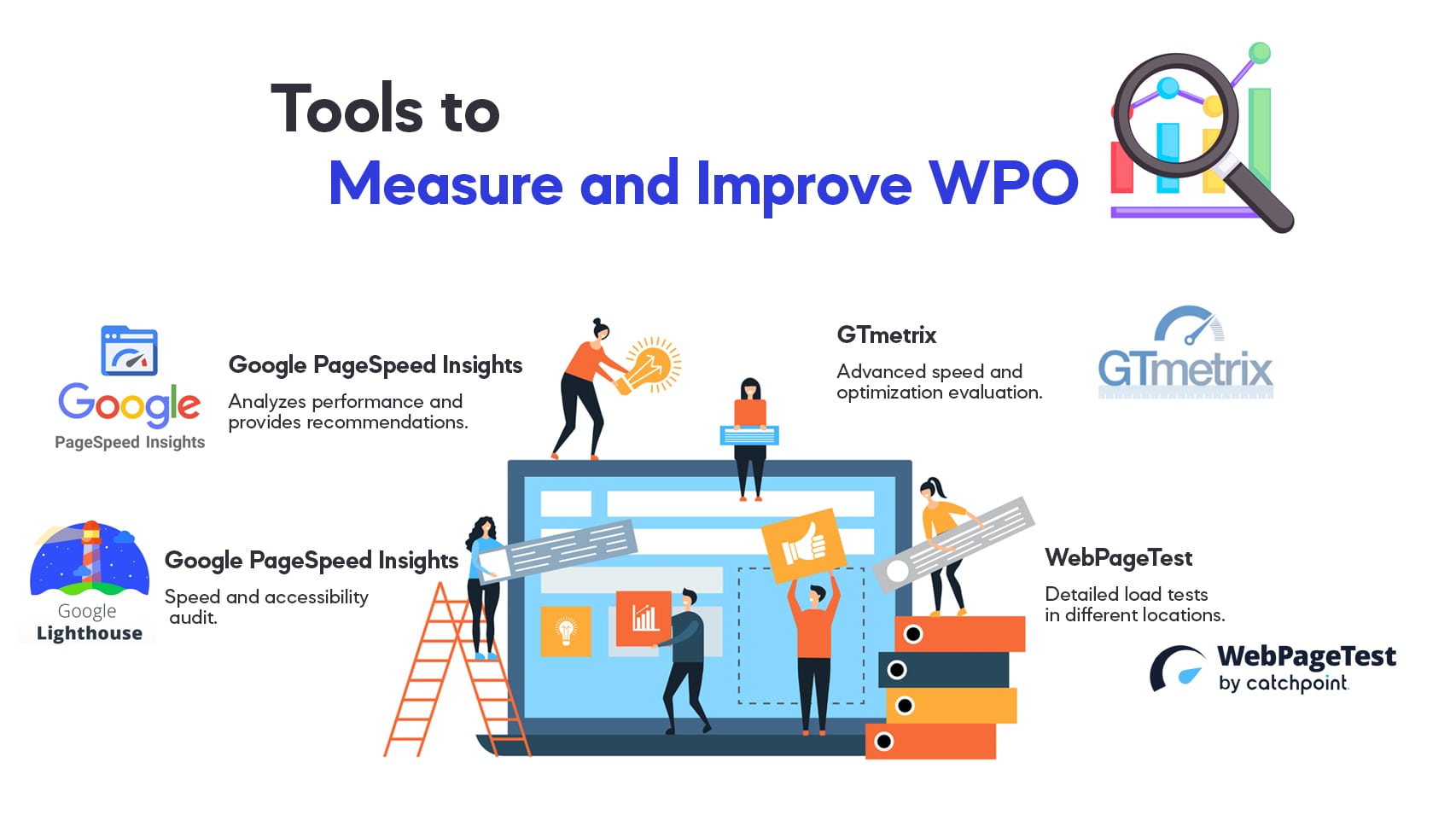
Portafolio de Páginas Web
Diseño Web Profesional
Web Performance Optimization (WPO):
KEYS TO A FASTER AND MORE EFFICIENT WEBSITE
What is WPO and why is it important?
Web Performance Optimization (WPO) is the set of techniques and strategies focused on improving the speed and performance of a website.
A fast site not only enhances the user experience, but also boosts Google ranking, reduces bounce rate, and increases conversions.
Benefits of WPO
– Better user experience (UX)
– Higher SEO ranking (Google prioritizes fast websites)
– Increased conversion rate
–Lower bounce rate
–Optimized performance on mobile devices

Key Factors in Web Performance Optimization
1-Image Optimization
-Use modern formats like WebP or AVIF.
-Compress images without losing quality using tools like TinyPNG or Squoosh.
-Implement lazy loading to load images only when they are visible.
2-Minification and File Compression
-Minify HTML, CSS, and JavaScript using tools like UglifyJS or Terser.
-Use Gzip or Brotli compression to reduce file size.
3-Use of a Content Delivery Network (CDN)
-Services like Cloudflare or Fastly distribute your content across global servers to improve load speed.
4-Browser and Server Caching
-Configure cache headers to store static resources and reduce load times for returning visitors.
5-JavaScript and CSS Code Optimization
-Reduce unnecessary scripts and load only essential ones.
-Implement deferred (defer) and asynchronous (async) loading to avoid render-blocking.
6-Server Response Time Improvement
-Use fast and well-optimized servers.
-Optimize the database and use caching storage with tools like Redis or Memcached.
7-Core Web Vitals Implementation
Google evaluates three key metrics:
– LCP (Largest Contentful Paint): Load time of the main content.
– FID (First Input Delay): Response time to the user’s first interaction.
– CLS (Cumulative Layout Shift): Visual stability of content.

Conclusion
Implementing WPO is not just an option—it’s a necessity for any website or online store looking to stand
out in speed, SEO, and conversions.
Optimize your website today and enhance your users’ experience!

